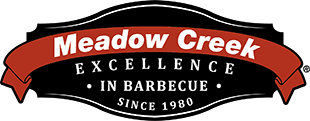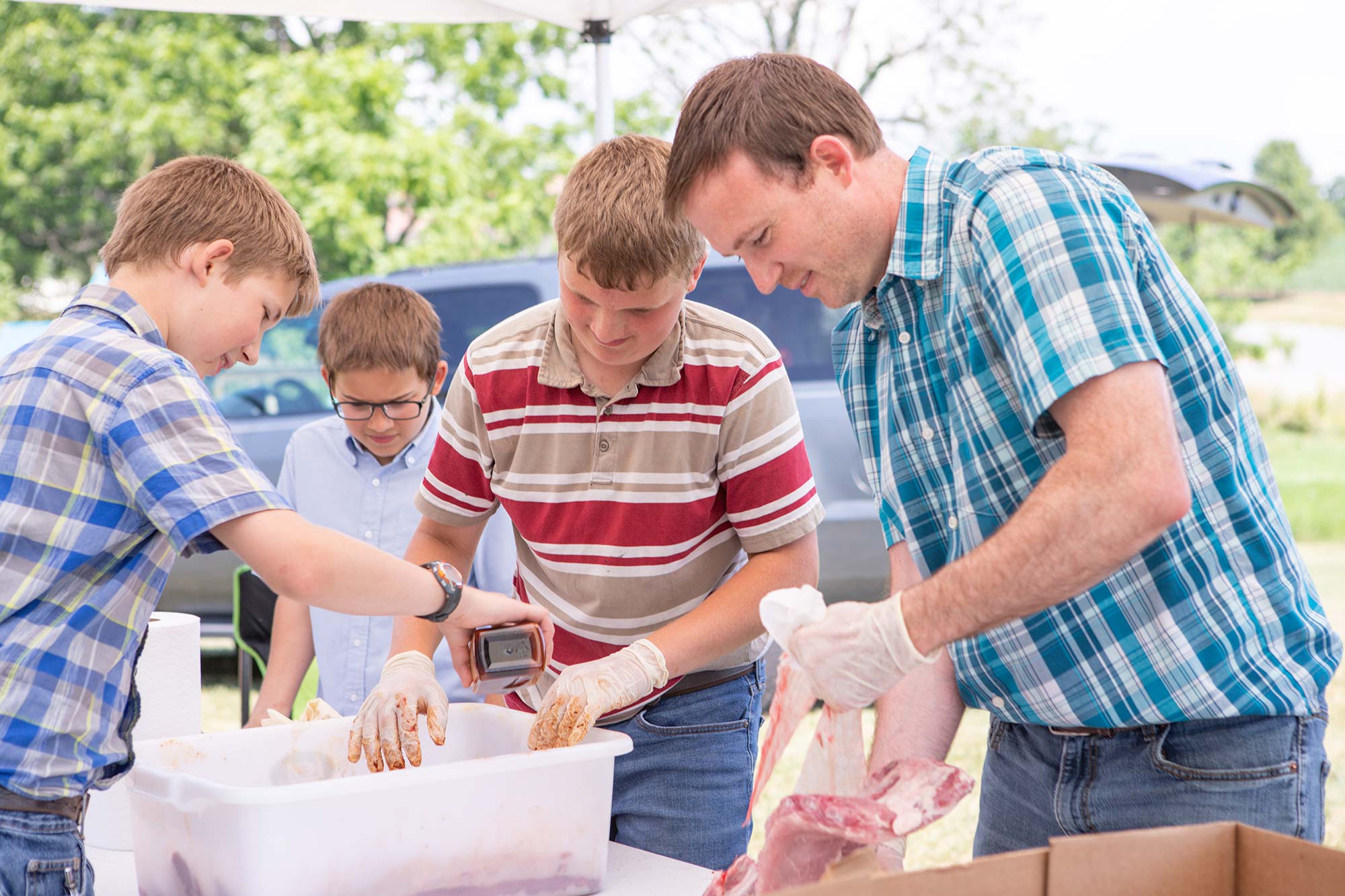How to Plan an On-Site Barbecue for a Crowd (Sample Checklist Included)
While I’m not a caterer, I’ve cooked meat often enough for 50–100 people to know that when it’s done right, it can be a smooth process, but without a solid plan, you're walking on thin ice and setting yourself up for stress and frustration.
In this article, I'll share my process for planning an on-site barbecue and a sample checklist you can adapt for yourself. You'll see that cooking meat for small crowds is not that hard if you follow a proven plan.

Are you "craving" a dependable barbecue smoker that can efficiently transform cases of meat into authentic low and slow BBQ? The Meadow Creek TS250 trailer with a front-mounted BBQ42 is perfect for cooking at on-site barbecues.

“I now have 3 different stick burners with the Meadow Creek TS250 being the crown jewel. It is an unbelievable piece of equipment. It is built so well and is very functional. It holds temps well and has so much space.”
- Donald DiGeronimo, Independence, Ohio -
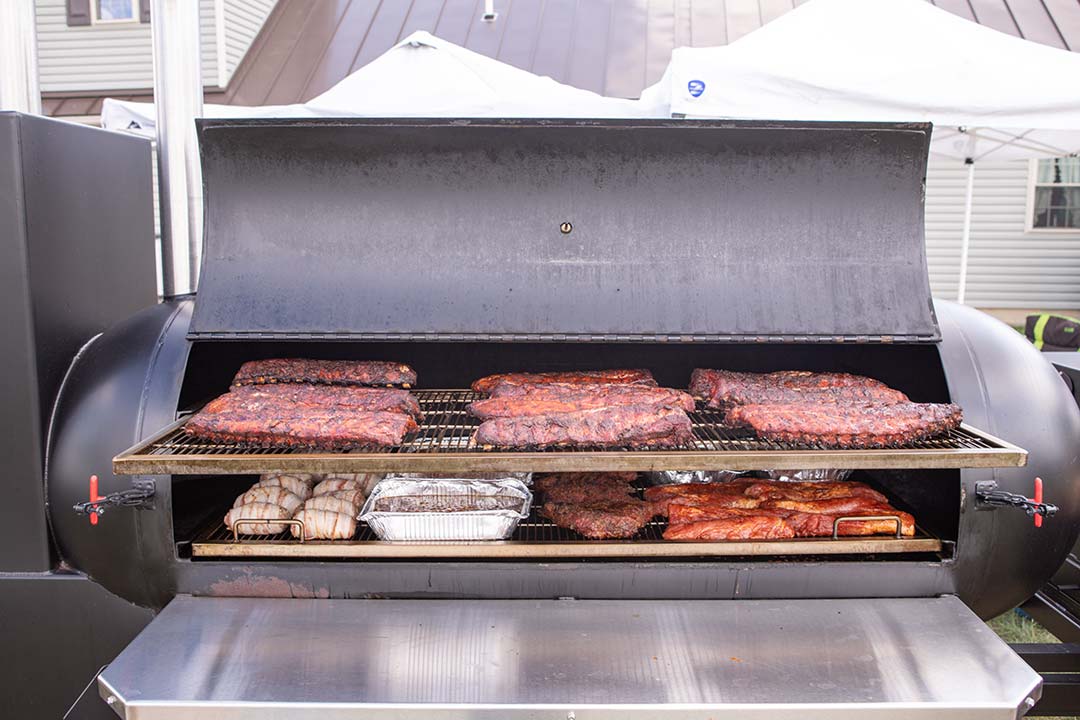
TS250 loaded with ribs, armadillo eggs, tri-tip, meatloaf, and more
The Importance of Using Lists
Unless you do this stuff all the time, you need a list when cooking for a crowd. At the risk of sounding like Mr. Obvious, a list helps you avoid the stress of forgetting things. Working with a list isn't easy for everyone, but if you wish to cook meat for a crowd with confidence, make a list.
The most important list you'll need is a packing checklist with everything you'll need on-site for the event. I don't cook for events often, but I like to start by making a list of everything that comes to my mind at least one or two days in advance. When I think of something else I’ll need, I add it to the list.
- For a checklist to work, you must list everything. Don’t try to remember something instead of adding it to the list. Your mind is busy enough making sure the meat is cooked to perfection and on time.
- As I pack and load my supplies, I check each item off of the list. This works without a flaw, if you are careful not to check anything until it’s actually packed.
Using a list is really that simple.
Recently, we forgot one of the rubs I planned to use for an event 15 minutes from the house and I had to drive back to get it, which threw the ribs off schedule. I was lucky to lose only half an hour, and thankfully I had enough margin in my schedule that it worked out okay, so it could have been much worse. This happened because I thought the seasonings were packed, but someone else packed them and skipped one of the items on the list.
If you have a helper or team packing for you, take the time to give them clear instructions so that they know exactly what they are supposed to pack. It doesn't hurt to double check things too.
This might all sound elementary, but trust me... it's worth the extra effort to use a checklist and to do it right so that your list works for you!
On-Site Barbecue Checklist
Here is my packing checklist from a recent on-site cook we did. We were only responsible to cook the meat for 90 people (plus leftovers). Use this list as a guideline and adapt it to your situation.
Software or a Good Ol' Notepad?
In my business, we recently switched to Asana for project management and I use it for almost all of my lists and reminders. It works perfectly and the mobile app is well-designed too. Call me silly, but I especially love the release of happy chemical in my brain from marking a task complete and seeing it light up with a rainbow of colors.
I like using an app on my phone, such as Asana, because I carry my phone with me already and it's easy to edit my notes. Having fewer papers on my desk to keep track of is a major plus too. Having said that, I really enjoy using paper for some things, such as brainstorming or adapting a recipe in the kitchen. The key is to find which method flows best for you so that you actually use it.
In Asana, I create a task for each cook/event. Within this task, I make a subtask named "Pack" which will contain my checklist. Each item I need to pack is a subtask under "Pack."
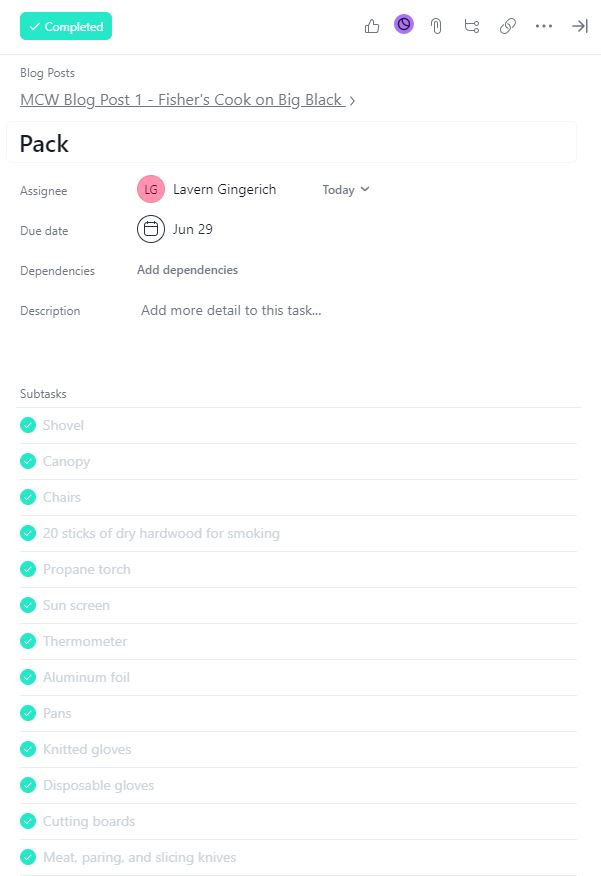
Asana checklist
I also make tasks next to "Pack" for other things that need to be done before the cook, such as grocery shopping (which will contain my grocery list), mix beans, and prep my smoker. In this way, everything is easy to find and I can see at a glance what still needs to be done.
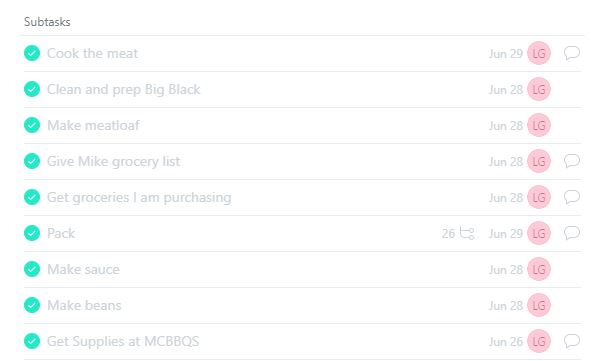
Other to do lists for the same project
Beyond having a packing checklist and a basic to-do list, a clear plan is vital to cooking for a crowd with confidence.
I list the meats I plan to cook and which rubs I’m planning to use in the main task description. As the plan evolves, this gives me an up-to-date picture of exactly what's going on and I don't have to worry about my mind getting overloaded with all of the details.
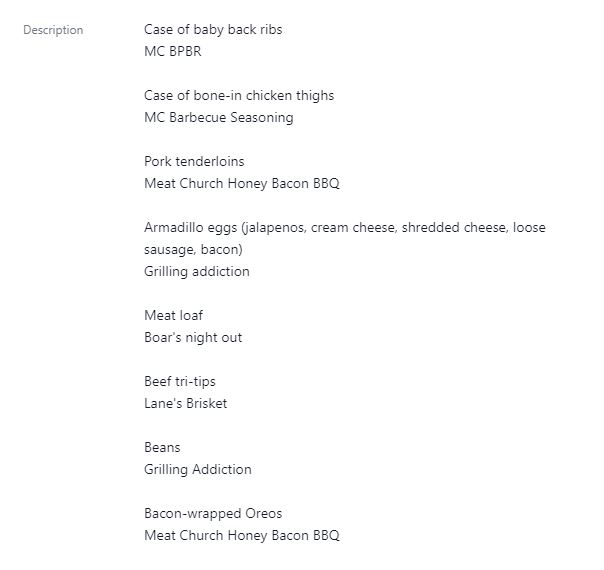
Meats list
If I'm cooking a handful or more of different meats in one day, I like to make a cooking schedule of when I need to fire the smoker and put each item into the smoker. I put this inside of my "Cook the meat" task description, and this is very helpful for knowing whether I am on track with things.
It's also a good idea to record when you add a meat to the smoker, add fuel, wrap something, remove something from the smoker, etc. Sometimes I simply use comments in Asana for this because it automatically adds a time stamp to each comment and makes it easy to snap a photo and attach it to the comment. This method is not as user-friendly as using a real cooking log because you have to hover the date stamp in a web browser to see the time, and the app doesn't even show the time when comments were posted, but for me, it's a handy way to quickly record what happened and when.
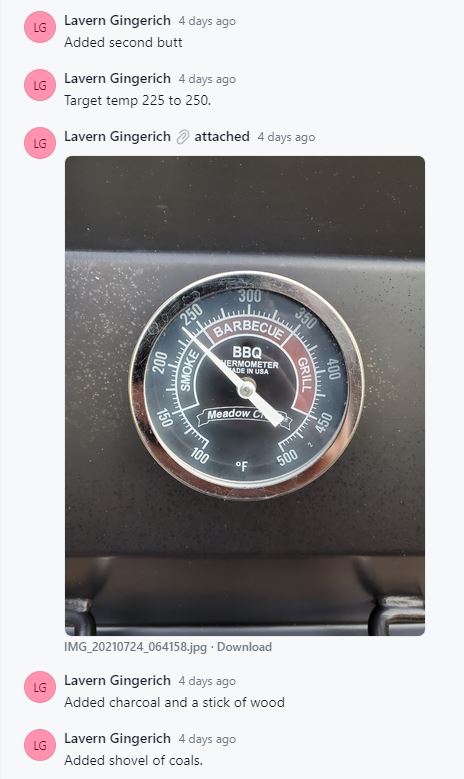
Cooking log
Whenever I've cooked on-site for an event, I’ve only been responsible for cooking the meat. Of course, if you’re cooking the entire meal, there is more involved with rounding out the meal, food service, and so on. Cooking only the meat is a really great way to gain experience and boost your confidence while someone else manages the rest of it.
Summary of On-Site Cooking Tips
- Make a complete packing checklist for everything you'll need on-site to make sure you don't forget something you were planning to take along and to relax your mind.
- Make a separate to-do list of all the separate tasks that pertain to the cooking project.
- Make a list of every meat / food that you’ll be cooking with notes about which seasoning you’ll use and any special treatment you’ll be giving it, such as injecting or brining.
- Write down a projected schedule for each item so that you can tell whether you're on track.
- Record what actually happens for your records later.
It goes without saying, but I need to remind you that your success in cooking barbecue for a crowd hinges on the equipment you use. Capacity, ease of use, and presentation are all important factors to consider when choosing a rig to do on-site and roadside barbecues.
Our TS250 smoker trailer with a front-mounted BBQ42 charcoal grill is a popular choice for this. This rig is large enough to feed hundreds of people and the charcoal grill on the front is excellent for diversifying your menu with grilled chicken and sausages.
Prefer to focus on grilled chicken? Check out our chicken cooker trailers with multiple pits for cranking out perfectly-cooked bone-in chicken at a roadside operation.
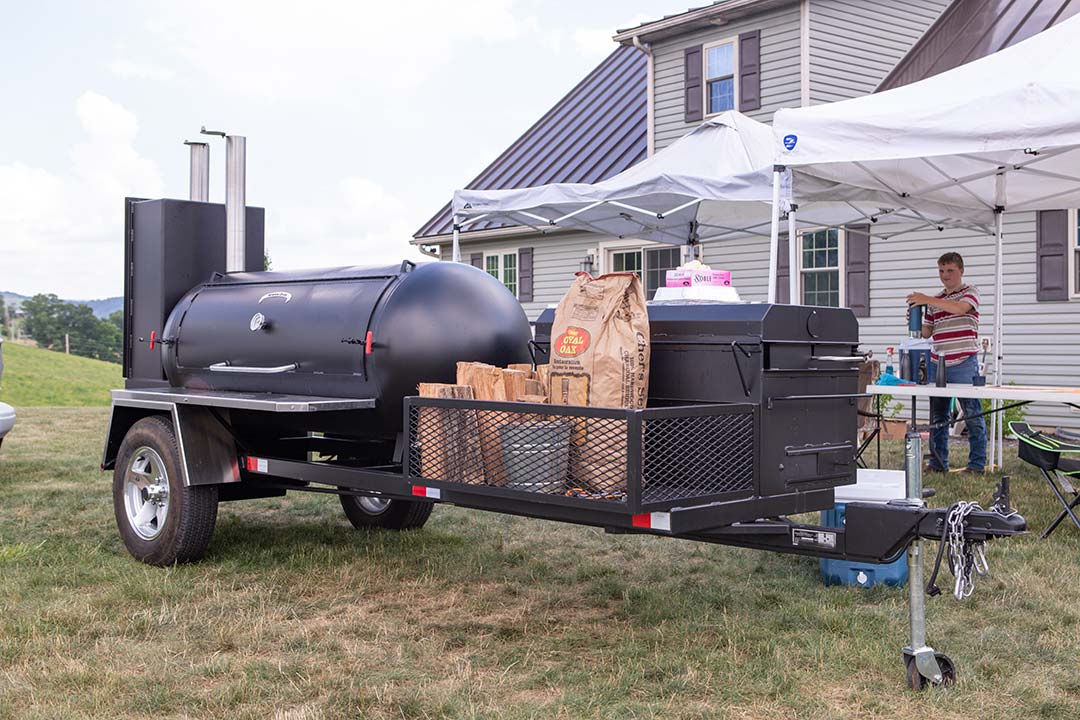
The TS250 has a door on both sides of the tank and a storage box for hauling supplies.

This smoker makes cooking large amounts of authentic barbecue fun and easy! The sliding grates are handy for loading and unloading the meat and the optional stainless steel shelves make a fantastic work surface.
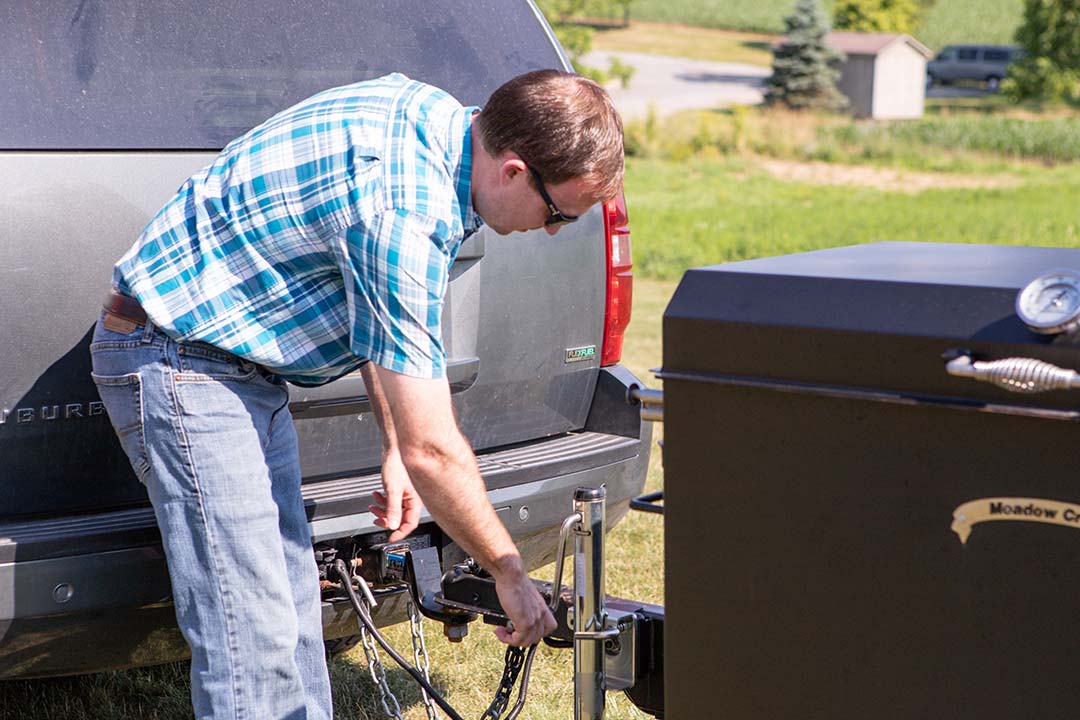
Our trailers are designed for travelling at highway speeds and come with a wheel jack, safety chains, and flush-mount LED lights.
Click here for stories and videos of "Big Black", my customized TS250 tank smoker:
